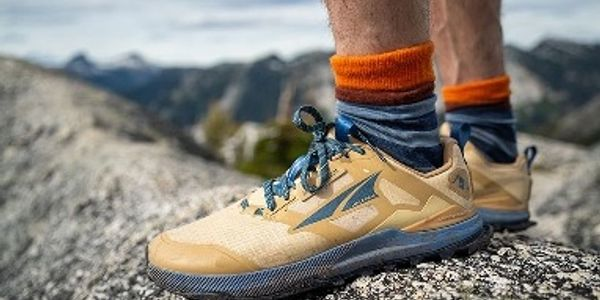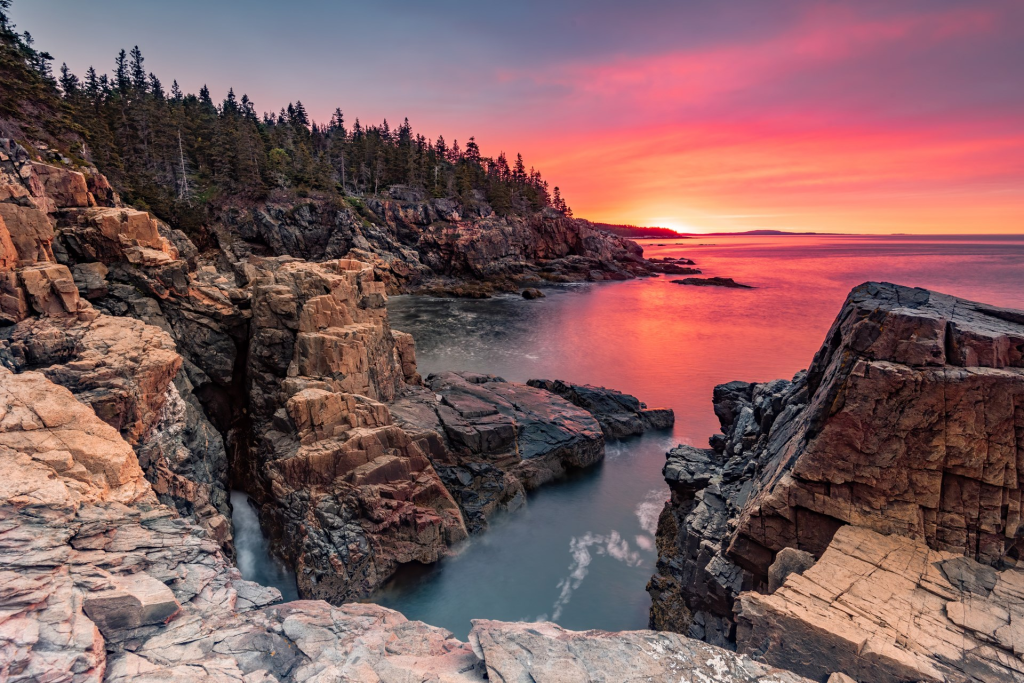Enjoying Nature and Beating the Social Media Trap
By Cap Puckhaber, Reno, Nevada
I’m Cap Puckhaber, and I’ve spent more than 20 years trying to balance my life as a marketing professional with my deep love for the outdoors. I’m a finance writer, a blogger, and an amateur investor, but my real passion is getting out on the trail. That passion has led me to watch, with some concern, as social media has completely changed how we interact with nature. I’ve seen the good and the bad. That’s why an event like the Outside Festival is so interesting to me. It sits right at the intersection of a massive, shareable event and a genuine appreciation for the environment.
This post is my complete breakdown of the Outside Festival. I’m not just going to cover the basics like who’s playing or how to get tickets. I’m going to dig into the entire experience, from the music to the mission. More importantly, I’ll share my own experiences on how we, as a community, can attend this amazing event while respecting the very nature it celebrates. We’ll cover trip details, practical advice, and answer the big questions about how to do this right, especially when our phones are buzzing in our pockets.
What Is the Outside Festival All About?
So, what is the Outside Festival? At its core, it’s an immersive, outdoor music festival that throws out the traditional arena model and instead combines top-tier live performances with the natural beauty of the great outdoors. It’s built on the idea that music and nature don’t just coexist—they make each other better. I’ve been to a lot of shows in concrete stadiums, and I can tell you, there’s just no comparison. The sound is different, the air is different, and the whole vibe is more communal.
The festival has gained a lot of recognition for its strong commitment to sustainability and environmental stewardship. This isn’t just a marketing gimmick where they put out a few extra recycling bins. It’s woven into the festival’s DNA. They aim to create a unique concert experience that operates in harmony with the environment, which is a pretty tall order for a large-scale event. It’s a standout event in the music world because it genuinely tries to walk the walk, not just talk the talk.
The Core Concept: Music and Nature
The entire event is designed to foster a connection with the environment. Past festivals have been hosted in absolutely picturesque locations, from sprawling parks and forested areas to wide-open fields. These places aren’t just backdrops. They are active parts of the event. The setting encourages you to do more than just stand and watch a stage. It invites you to explore, engage with the natural world, and maybe even take a scenic hike between sets.
This creates an atmosphere you just don’t get elsewhere. It’s a shared space where you can discover new music and enjoy the beauty of nature, all within a safe and welcoming environment. The organizers go to great lengths to make the festival grounds themselves part of the attraction, with art installations that complement the landscape and vendors that reflect the eco-conscious mission.
More Than Just Music: A Focus on Sustainability
Beyond the stellar lineups, the festival has a much bigger purpose. It’s about celebrating the power of music while simultaneously hammering home the importance of environmental awareness and is a platform to raise awareness about critical issues, foster a real sense of community, and promote eco-conscious living. It’s one thing to read an article about conservation; it’s another to be surrounded by thousands of people all celebrating it.
This commitment is reflected in its operations. The event provides a massive opportunity for attendees to learn about sustainability, engage in eco-friendly practices, and support local, eco-conscious businesses and artists. The organizers often build sustainability efforts right into the event structure. This can include everything from offering carbon offset contributions with your ticket to donating a portion of the proceeds to environmental charities. They push for sustainable food vendors, massive waste reduction programs, and water refilling stations to eliminate single-use plastics.
Who Plays at the Outside Festival?
The festival consistently pulls in fantastic acts that fit the vibe. A headliner like Lord Huron, for example, is a perfect fit. Their whole sound is cinematic, ethereal, and deeply connected to nature and storytelling. It’s the kind of music that just feels right when you’re standing under an open sky instead of a stadium roof. Their kind of performance is a huge draw, bringing in both new fans and dedicated followers.
The lineup is usually a diverse mix. You’ll find emerging talent alongside well-established stars, all of whom generally share a connection to the festival’s values. The booking seems intentional, steering away from acts that would clash with the event’s core mission. It’s about music that enhances the natural setting, not just overwhelms it. This curation is a huge part of what makes the experience so unique and cohesive.
The “Social Media Effect” on Outdoor Spaces
Now, we can’t talk about a massive, beautiful outdoor event without talking about the elephant in the room: the affect of social media on the outdoors. As an outdoor enthusiast, I’ve seen this firsthand. Platforms like Instagram and TikTok have drastically changed the way we interact with the outdoors. This digital revolution has inspired millions to explore nature, but it’s also come with some serious unintended consequences.
A festival like this, which is practically designed to be photogenic, sits at the epicenter of this trend. It’s a challenge the festival organizers are aware of and one that we, as attendees, have to be conscious of. It’s a classic case of a good thing having a complicated downside.
How Our Phones Changed the Outdoors

In this digital age, outdoor influencers have played a huge role in making hiking, camping, and other activities more popular. Beautiful pictures of mountain peaks, serene lakes, and lush forests have sparked wanderlust in countless people, motivating them to lace up their hiking boots and hit the trails. I completely understand the appeal because I’ve felt it myself.
This surge in popularity, however, has led to a massive strain on the very places we’re trying to appreciate. Many popular hiking trails, parks, and campsites have become severely overcrowded. Scenic spots that once offered solitude are now inundated with visitors, all trying to get that same perfect photo. This isn’t just an annoyance; it’s a real environmental issue.
The Good: Inspiration and Inclusivity
I want to be fair, though. Social media has done wonders in encouraging people to get outdoors. It’s broken down a lot of barriers. The outdoor industry has made strides in recent years to make recreation more inclusive, and social media has been a huge part of that. Seeing people who look like you enjoying the outdoors can be incredibly empowering.
Hiking, camping, and outdoor activities should be accessible to everyone, regardless of race, gender, ability, or socioeconomic status. We need to foster a culture where people from all walks of life feel welcomed and empowered to explore. Social media, at its best, creates community. It can help raise awareness about volunteer opportunities and environmental initiatives, creating a sense of collective responsibility.
The Bad: Overcrowding and Environmental Strain
Here’s the flip side. With the increase in outdoor enthusiasts sharing their adventures, we’re seeing real damage. Full parking lots are just the start. I’m talking about the erosion of delicate natural environments, littering, and a general disrespect for nature. The influx of visitors, many of whom may not be familiar with outdoor etiquette, can cause lasting damage to ecosystems.
This is where planning and respect become so critical. We can’t just show up and expect nature to handle our impact. Popular trails and campsites get overwhelmed, especially during peak seasons. This is where tools like the AllTrails app become invaluable. You can check recent trail reviews for crowd levels and conditions. It helps hikers and campers plan their trips at less busy times, ensuring nature isn’t completely overrun.
My Experience: Why This Festival Feels Different
This brings me back to the Outside Festival. It’s a large gathering, so it has the potential for a huge negative impact. Yet, the entire event is structured to combat this. The mission of sustainability isn’t just a poster; it’s an active part of the experience.
I’ve been to festivals where the ground is a sea of plastic cups and trash by the end of the first night. It’s an absolutely disgusting sight and completely avoidable. The Outside Festival is the opposite. There’s a palpable sense of shared responsibility. You see people actively using the correct bins, carrying reusable water bottles, and cleaning up after themselves.
A Community Built on Shared Values
This creates a self-selecting audience. People who are willing to pay for a ticket to a festival that prioritizes sustainability are generally people who care about those values. It fosters a community that is more respectful by default. You’re surrounded by fellow hikers, campers, and nature lovers who are all there for the music but also for the environment.
This shared value system changes how people interact. It’s more considerate. People seem more aware of their surroundings and their impact. It’s a powerful thing to be in a large crowd that is collectively trying to do the right thing. It proves that large-scale events don’t have to be ecological disasters.
The Problem of “Doing It for the ‘Gram”
That said, it’s not perfect. You will absolutely see people there who are more focused on their phone screen than the stage or the scenery. The “doing it for the ‘gram” culture is strong. You’ll see people lining up for a photo at a branded installation, ignoring the natural beauty just a few feet away.
This is the central conflict of our modern outdoor experience. Are we there to experience nature, or are we there to document ourselves experiencing nature? I find that the true value of these moments lies in the personal connection we make with the music and the environment, not the number of “likes” we get on a post. When we prioritize that connection over digital validation, we all contribute to preserving the magic of the event.
A Practical Guide to Attending the Outside Festival
Alright, let’s get into the practical side of things. If you’re planning to go, a little preparation goes a long way. This isn’t your typical city concert. You need to plan for the “outdoor” part of the outdoor festival. This means thinking about everything from your tickets to your tent, all through the lens of sustainability and respect.
Planning Your Trip and Getting Tickets
Ticket prices for the Outside Festival vary. General admission tickets are the standard, but there are usually VIP passes available. These VIP options often include exclusive amenities like premium viewing areas, private restrooms, or maybe even meet-and-greet opportunities. Specific pricing and packages are announced on the official festival website. My advice is to get on their email list. Early bird discounts are almost always offered, and they can save you a significant amount of money.
When you buy your ticket, look for those sustainability options I mentioned. If they offer a carbon offset contribution, I strongly suggest adding it. It’s usually a small amount, but it’s a direct way to mitigate the impact of your travel to the event.
What to Pack (The Eco-Friendly Way)
How you pack can have a huge impact. The goal is to pack in and pack out, leaving no trace behind. Forget single-use anything. A reusable water bottle is number one. There will be free water refilling stations, so you should not bring cases of plastic water bottles. Layers of clothing are also essential. You’ll be outdoors all day and night, and even if the day is hot, the temperature can drop significantly after dark. Pack moisture-wicking fabrics and a good rain jacket, just in case.
You also need to think about power and food. Your phone will die, so instead of relying on disposable battery packs, a small solar charger or a high-capacity reusable power bank is a much better choice. For eating, most food vendors will use compostable materials, but you can go one step further. Bringing your own bamboo utensil set and a cloth napkin means you create zero waste when you eat. Finally, you’ll want to sit on the ground, so a lightweight, waterproof blanket or small tarp is perfect.
What Not to Do: A Common Mistake I See
Here’s the big “don’t” I see all the time, especially from people who aren’t seasoned campers. Do not treat festival camping like a disposable experience. I’ve seen people go to a big box store, buy a cheap tent, sleeping bags, and chairs, and then just leave them all behind on the last day. This is incredibly wasteful and disrespectful.
This practice turns the beautiful festival grounds into a landfill. It also puts a massive cleanup burden on the staff and volunteers. If you are camping, you must commit to packing out every single thing you brought in. If you don’t want to keep the gear, find a place to donate it. Do not abandon it. Plan ahead.
How We Can All Be Better Guests (At the Festival and Beyond)
Attending the Outside Festival is a privilege. We’re being allowed to have this amazing experience in a beautiful natural setting. That privilege comes with a responsibility to be good guests. This mindset doesn’t just apply to the festival; it applies to every time we step onto a trail. We have to be mindful of how we engage with outdoor spaces, promote inclusivity, and give back to the environment.
Embracing Leave No Trace Principles
The gold standard for outdoor ethics is the Leave No Trace framework. It’s a set of seven principles that are easy to remember and apply. The National Park Service has extensive information on this, and I recommend everyone read it. The core ideas are simple: plan ahead, prepare, and dispose of your waste properly. This means you know the rules, pack right, and are ready for the weather. It also means you pack out every single thing you pack in, including food scraps, wrappers, and cigarette butts.
Travel on Durable Surfaces and Leave What You Find
These two principles are also critical. At the festival, this means staying on marked paths and in designated camping areas. You should not cut through sensitive vegetation just to get a shortcut. The ground can be fragile, and you can cause a lot of damage without realizing it. “Leave What You Find” is just as important. Don’t pick the wildflowers for a photo. Don’t stack rocks for fun. Leave all natural objects for the next person to enjoy. The goal is to leave the festival grounds looking as good, or better, than when you arrived.
Respecting Wildlife and Other Visitors
You might see animals, even at a busy festival. Observe them from a distance and never, ever feed them. Feeding wildlife is dangerous for them and for you. This is their home that we are guests in. Finally, be considerate of other visitors. This is a hugely important point for everyone to remember. Keep your noise levels reasonable, especially in camping areas at night. Be respectful of other people’s space. Everyone is there to have a good time, and a little mutual respect goes a long way.
Using Social Media Responsibly
This is a big one for me. Sharing our adventures is fun, but we need to be thoughtful. Think about the “why” behind your post. Are you sharing the joy of the experience, or are you just trying to build up your own brand? This awareness can change how you post. Instead of just a selfie, maybe you share a post about the festival’s sustainability mission. You could use your platform to highlight the Leave No Trace principles you followed. Use your social media presence to educate and inspire responsible behavior, not just to create envy.
The Geotagging Debate: My Take
Let’s talk about geotagging. When you tag your exact location on Instagram, you’re sending a signal to thousands of people. This is how hidden gems become overcrowded nightmares. I’ve seen it happen in my own local hiking areas. A spot that was quiet for years suddenly gets blasted on social media, and within weeks, it’s overrun and damaged. My advice is to simply be vague with your location tagging. At the festival, tagging “Outside Festival” is fine. But if you’re on a hike and find a beautiful, pristine spot, don’t tag the specific trailhead or GPS coordinates. Tag the general area, like “Cascade Mountains” or “Sierra Nevada.” People who are truly interested can do the research, and it prevents a massive, unprepared rush to a delicate location.
Beyond the Festival: Giving Back
The good feelings from a festival like this can fade. The real test is what you do afterward. Let that inspiration fuel some real action. We all have a role to play in protecting our precious natural resources. The outdoors is a shared space, and we need to work to protect it and make it welcoming for everyone.
The Push for Real Inclusivity
One of the greatest strengths of the outdoor community is its potential for inclusivity. We need to keep pushing for it. This means advocating for accessible trails, promoting diverse voices within the outdoor community, and ensuring that outdoor spaces are safe and welcoming for all. Social media can be a great tool for this. Follow and support groups that are working to get underrepresented communities outdoors. If you’re an experienced hiker or camper, be a mentor. Be welcoming to newcomers on the trail. We were all beginners once. A friendly, non-judgmental attitude can make all the difference.
Getting Involved in Conservation
If you love these outdoor spaces, you’ve got to help protect them. Giving back is how we ensure future generations can experience the same joy we find in nature. It’s not as hard as it sounds. Volunteering for a trail maintenance day with a local club is a fantastic way to make a direct impact. Participating in clean-up events at a local park or river is another great option. You can also donate to environmental organizations that are doing the hard work of conservation and advocacy. Even a small donation to a group like the Sierra Club or a local land trust makes a difference. Use the festival as a starting point, not an end point.
Final Thoughts: It’s About the Experience, Not the Likes
So, the Outside Festival is a fantastic event. It’s a model for how music, community, and environmental stewardship can come together. But it’s also a microcosm of the larger challenges we face as modern outdoor enthusiasts. We have to navigate the influence of social media, the pressures of overcrowding, and our own personal impact. At its core, hiking, camping, and enjoying live music outdoors are about experiencing something real.
They’re about disconnecting from the stresses of daily life and finding joy in the moment. While sharing our adventures online is part of the fun, we can’t forget that the true value is in the connection, not the clicks. By planning ahead, being respectful, and staying mindful of our impact, we can enjoy the Outside Festival and all our outdoor adventures to the fullest. We can protect these magical places for everyone.
Frequently Asked Questions (FAQ)
How much do Outside Festival tickets usually cost?
Ticket prices really vary depending on the package. General admission tickets typically start at a reasonable price for a multi-day festival, but you can expect to pay more for VIP passes. These VIP options give you access to exclusive amenities, premium viewing areas, and other perks. Your best bet is to check the official festival website and sign up for their newsletter, as they often release early bird tickets at a discount well before the event.
Is the Outside Festival family-friendly?
Generally, yes, the festival cultivates a safe and welcoming environment that is suitable for all ages. The focus on nature, art, and community makes it a great experience for families. However, you should always check the official festival guidelines for any age-specific rules or restrictions. Remember to pack accordingly for children, including sun protection, hearing protection for loud music, and plenty of snacks and water.
What are the Leave No Trace principles?
The Leave No Trace principles are a set of seven guidelines that act as an ethical framework for enjoying the outdoors responsibly. They are: 1. Plan Ahead and Prepare, 2. Travel and Camp on Durable Surfaces, 3. Dispose of Waste Properly (pack it in, pack it out), 4. Leave What You Find, 5. Minimize Campfire Impacts, 6. Respect Wildlife, and 7. Be Considerate of Other Visitors. Following these principles is the best way to ensure we protect our natural spaces for future generations.
About the author
Cap Puckhaber is a marketing strategist, finance writer, and outdoor enthusiast. He writes across CapPuckhaber.com, TheHikingAdventures.com, SimpleFinanceBlog.com, and BlackDiamondMarketingSolutions.com. Follow him for honest, real-world advice backed by 20+ years of experience.
Chasing Clicks on Closed Hawaiian Trails
Hiking and Backpacking Blog Posts
Why REI Ended Its Experiences Program

Join our Mailing List
Sign up with us now and be the first one to know about our exclusive offers and product updates.
By submitting your information, you`re giving us permission to email you. You may unsubscribe at any time.
Follow Cap Puckhaber on Social Media


About the Author: Cap Puckhaber
Backpacker, Marketer, Investor, Blogger, Husband, Dog-Dad, Golfer, Snowboarder
Cap Puckhaber is a marketing strategist, finance writer, and outdoor enthusiast from Reno, Nevada. He writes across CapPuckhaber.com, TheHikingAdventures.com, SimpleFinanceBlog.com, and BlackDiamondMarketingSolutions.com.
Follow him for honest, real-world advice backed by 20+ years of experience.





